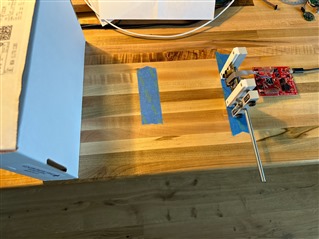Other Parts Discussed in Thread: OPT3101, MSP430F5529,
Hello,
I'm currently evaluating the OPT3101 using the EVM. I have been able to get up and running with the Latte out of the box demo without issue. I'm now proceeding to deeper evaluation. One of the main things I need to do is test with wider FoV optics, I know however that this will require re-calibration of the EVM. Additionally I know from my reading the documentation that this needs to be done via the SDK. I have a few questions regarding this process.
A disclaimer on my skill level with TI MCUs - I'm new to TI MCUs in general, but have a lot of experience with embedded MCUs from other manufactures.
1. Before I proceed to load any new firmware on the EVM or do a calibration, I would like to read our the current firmware and calibration coefficients from the EVM and save them off so that I can revert if needed during testing. This step is even recommended by the EVM user guide, but I have yet to find a procedure for doing this.
Must this be done via a SWD/JTAG prob? Or can this be done via the bootloader re-loaded on the MSP430?
2. In order to do the calibration, the SDK seems to reference the use of a MSP430F5529 launch pad. Is it required to use the launch pad? or is there a way to perform the calibration using the on board MSP430 on the EVM? If it is possible to do the calibration via on the on board MSP430 is there any documentation to show how this process is done?
Thanks,
Eric


